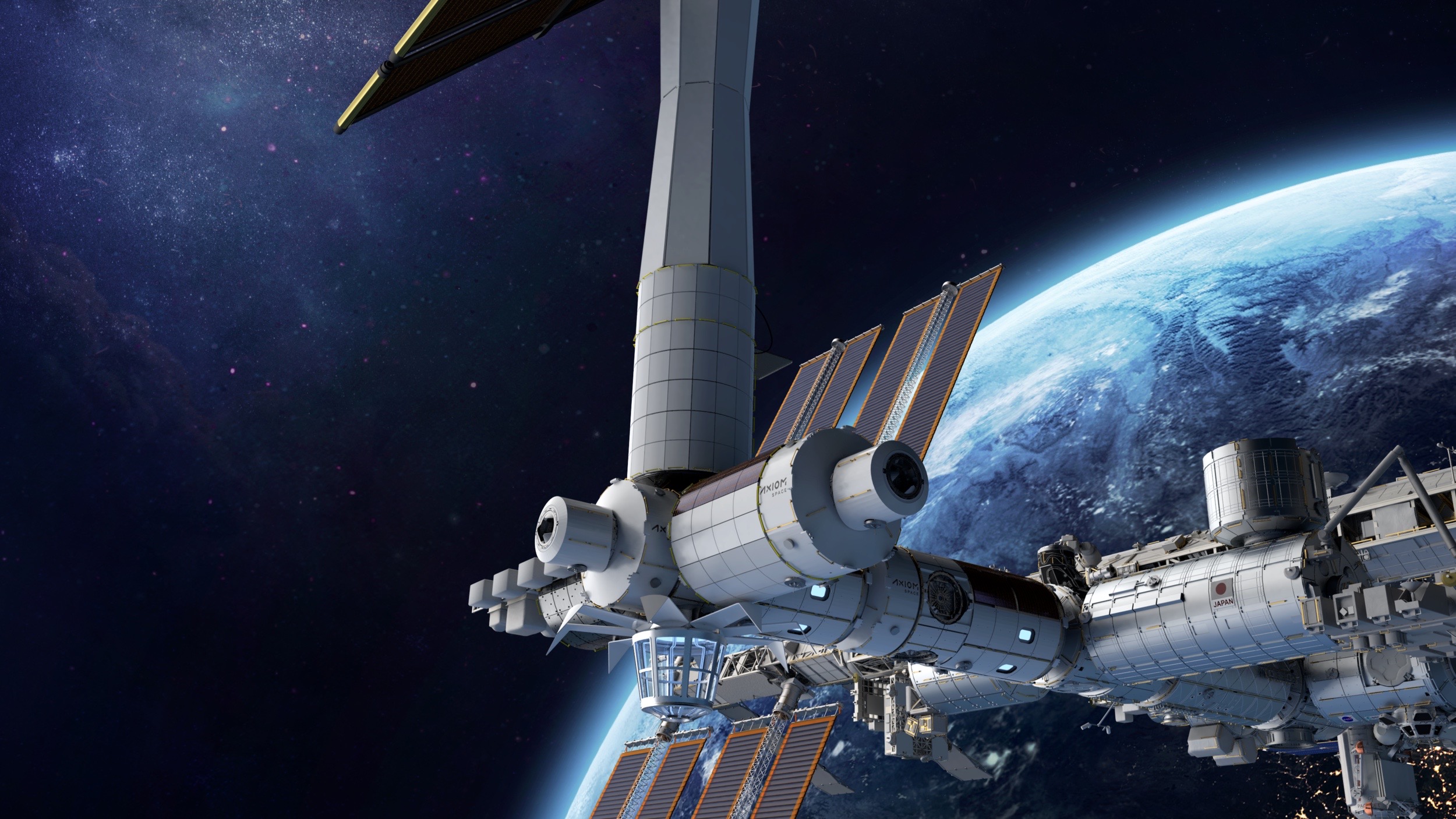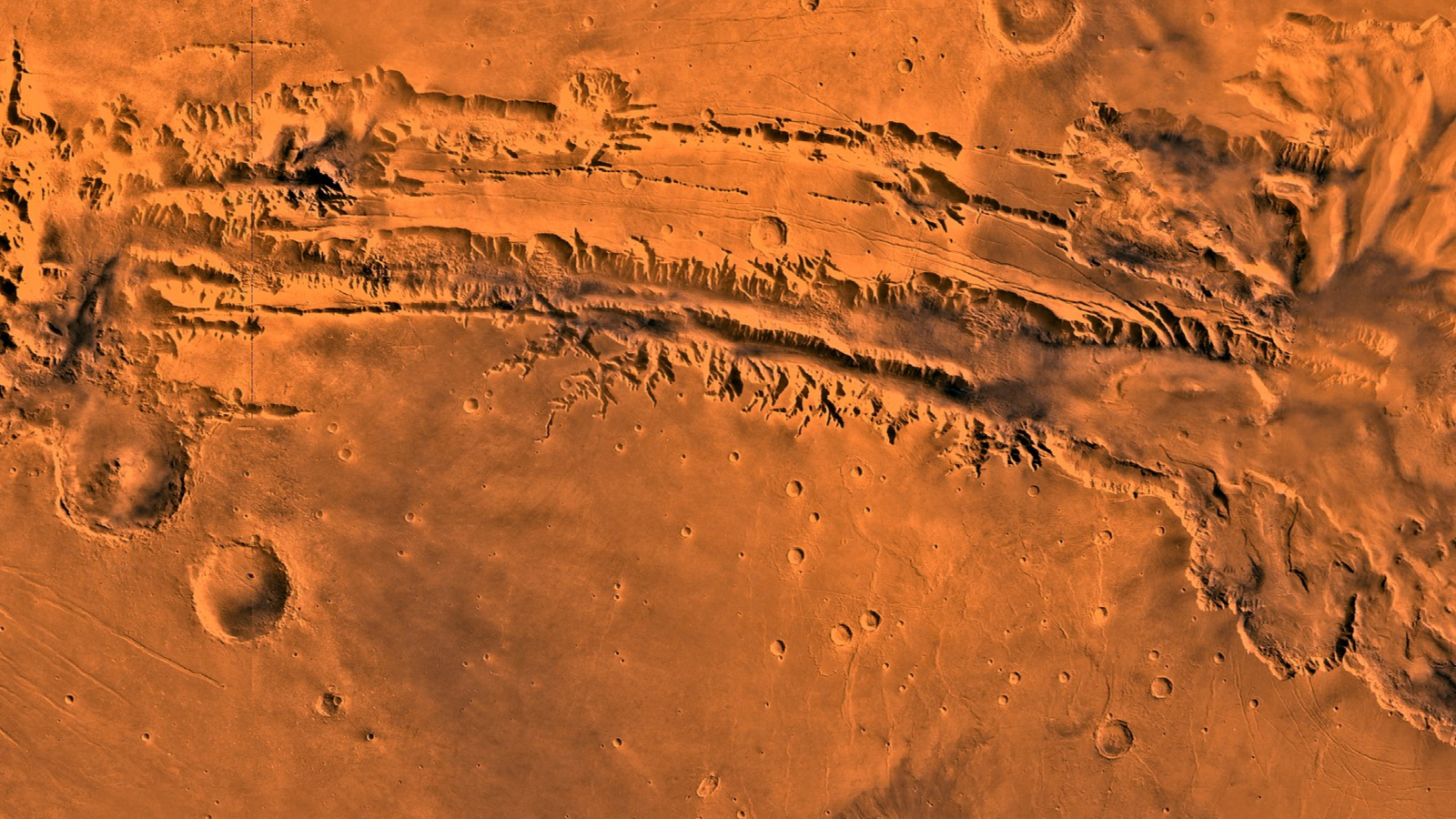
Private companies are getting ready to take the baton from the International Space Station (ISS).
The ISS, which has hosted rotating astronaut crews continuously for more than 20 years, is expected to retire around 2030. (Congress has officially approved it to operate only through 2024, but an extension is widely expected.) If all goes according to plan, several commercial outposts will be up running and in low Earth orbit (LEO) by then.
Last week, for example, NASA announced that it's awarding $415 million to help get three commercial outposts off the ground. Those stations are being developed by teams led by Blue Origin, Nanoracks and Northrop Grumman.
Related: Building the International Space Station (photos)
In 2020, Houston-based company Axiom Space got a NASA contract of its own, worth up to $140 million, to deliver at least one habitable private module to the ISS. Axiom plans to launch its first element to the orbiting lab in late 2024, then send several more up over the next few years. Eventually, the connected Axiom modules will detach from the ISS, leaving their natal nest like a bird that has learned how to fly.
Axiom has other irons in the spaceflight fire as well. For instance, the company has booked four commercial crewed flights to the ISS with SpaceX, the first of which is scheduled to launch in February.
Space.com caught up with Axiom Chief Technology Officer Matt Ondler via email recently to discuss the company's space station plans, the outlook for private industry in LEO and the importance of commercial missions such as SpaceX's recent Inspiration4 crewed orbital flight, among other things.
Breaking space news, the latest updates on rocket launches, skywatching events and more!
Space.com: How quickly can humanity get another LEO station up and running post-ISS? Are we likely to see a gap between ISS retirement and a new station coming online?
Matt Ondler: Axiom Space is on schedule to deliver our first privately developed module of the Axiom Station to the ISS in September 2024. We will deliver three additional modules by the end of 2027 to complete our initial space station. With the delivery of the fourth module, Axiom Station will have the capability to be independent of the ISS and can then separate to become an independent, next-generation space station with upgraded crew quarters, increased payload capacity and a dedicated manufacturing and research lab module.
This timeline supports the current planned end of ISS life, so there should be a seamless transition with no gaps in human continuous presence in LEO. This approach was built from the wealth of ISS and human spaceflight experience at the core of our team.
Space.com: Broadly speaking, what will our post-ISS LEO presence look like? Will it be mostly privately run stations, or a mix of public (e.g., China's Tiangong space station) and private outposts?
Ondler: Most will be privately owned and operated stations that support a mixed use of private, commercial and government users. At Axiom, we will provide capability and infrastructure for commercial customers as well as the opportunity for NASA and other government space agencies to continue their research, technology development and national astronaut missions in LEO. A commercial space station provides opportunities for new and non-traditional users of microgravity to engage in research, product development and scaling of manufacturing that we believe has the potential to radically improve life on Earth. A commercial space station also offers cost-saving opportunities for agencies like NASA to conduct fundamental space science research and prepare astronauts for longer missions to the moon, and on to Mars, without the financial burden of maintaining a LEO station.
Related: Private habitats, not just the International Space Station, may be needed to get astronauts to Mars
Space.com: Do you see a lot of opportunity for international cooperation on these coming LEO stations?
Ondler: The Axiom Station is designed and intended to be an international destination for a wide range of customers — a true global user base, both commercial and governmental, with greater ease of access as compared to the ISS today. Moreover, some of our suppliers are already international. Thales Alenia Space in Italy is providing the primary structure for the first two Axiom modules, for example.
Many countries don't participate in the ISS but have aspirations to be part of the space ecosystem; many of them are already expressing interest in Axiom Station, seeing opportunities to participate in the LEO economy in ways previously not available to them. We are keen to support that and help grow the community of nations that will conduct and lead the next stages of human space exploration beyond LEO.
Space.com: What are the main industries that you foresee supporting private outposts? For example, will tourism and pharmaceutical research be big drivers?
Ondler: Private and national astronauts will certainly be an early and ongoing market, as well as providing a LEO destination that can support research and technology development for further space exploration. But ultimately we believe the long-term big driver will be in-space manufacturing. I believe 15 to 20 years from now we will be surrounded by objects without which we can't imagine living, and which were manufactured in space.
Objects and products that were manufactured in the unique microgravity environment could disrupt a number of industries. We already see hints at what some of those products might be, but having a commercially available LEO destination will bring out ideas and possibilities that we can't imagine now. ISS and NASA could not provide companies opportunities to manufacture at scale. On the ISS, a company could only fly an experiment; even if the experiment was successful, there was not a place for that company to go to make the product at scale. A commercial space station like Axiom's will provide that opportunity and therefore I believe we will see all sorts of ideas and products we can't imagine today.
Related: Made In Space makes ceramic turbine part in orbit in another 3D printing milestone
Space.com: Is the necessary transportation infrastructure already in place, with SpaceX flying people now and Boeing getting ready to? Or do we need more crewed vehicles?
Ondler: Our partners at SpaceX are certainly the current leaders in enabling the NewSpace era through making commercial transportation available. However, transportation to space remains enormously expensive and time-consuming to schedule and plan. More transportation capability can only support the growing space economy and help manage costs. Among some extant needs are low-cost entry vehicles that can return these amazing products we will manufacture in space.
Space.com: How important are early private missions like Inspiration4 in paving the way for commercial space stations?
Ondler: All early private human spaceflight missions are important to raise awareness across the stakeholders that can enable or slow the growth of the space economy. Those stakeholders include investors, companies with ideas, engineers and government administrators. Early private missions get investors excited about the market potential, stimulate ideas for commercial applications, spur engineers to join new space startups like Axiom Space and influence government administrators to invest in helping commercial space to succeed.
When it comes to Axiom's private missions to the International Space Station, of which Ax-1 (launching in early 2022) is the first, they are particularly important as a demonstration of the viability of the microgravity platform for new and non-traditional users. These missions are intended to take a mission profile previously only reserved for governments — onboard the ISS, participating in robust research programs — and make them available to an expanded user base. A private focus on serious life and work on orbit is a first step in expanding the long-term human presence and capability in space, growing and serving demand for such missions, and clearing the way for the launch and operation of Axiom Station.
Mike Wall is the author of "Out There" (Grand Central Publishing, 2018; illustrated by Karl Tate), a book about the search for alien life. Follow him on Twitter @michaeldwall. Follow us on Twitter @Spacedotcom or on Facebook.
Join our Space Forums to keep talking space on the latest missions, night sky and more! And if you have a news tip, correction or comment, let us know at: community@space.com.

Michael Wall is a Senior Space Writer with Space.com and joined the team in 2010. He primarily covers exoplanets, spaceflight and military space, but has been known to dabble in the space art beat. His book about the search for alien life, "Out There," was published on Nov. 13, 2018. Before becoming a science writer, Michael worked as a herpetologist and wildlife biologist. He has a Ph.D. in evolutionary biology from the University of Sydney, Australia, a bachelor's degree from the University of Arizona, and a graduate certificate in science writing from the University of California, Santa Cruz. To find out what his latest project is, you can follow Michael on Twitter.
